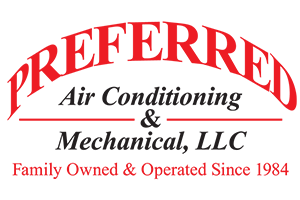How to Put the EnergyGuide Label to Work for You
As you shop for new HVAC equipment or other major appliances for your Jupiter, Florida home, be sure to use the EnergyGuide label as a tool for comparing different equipment models and brands. Keep in mind that the upfront cost of your new equipment represents only a fraction of its lifetime cost. The cost of the energy to run the equipment for 15 or 20 years could be many times the initial purchase price, so be sure that energy efficiency factors into your final buying decision.
Where to Find the EnergyGuide Label
Yellow and black EnergyGuide labels are prominently displayed on the outside of furnaces, air conditioners, refrigerators and other large appliances. If you don’t see a label on a display model that you’re researching, try looking inside the appliance or look for the information on the manufacturer’s website.
What’s on the EnergyGuide Label?
The EnergyGuide label on most appliances provides estimated annual energy use and operating cost information that you can use to make side-by-side comparisons of similar models. The label will show the estimated annual cost of the labeled model on a horizontal line that also shows the range of annual operating costs of similar models.
The labels on furnaces don’t include annual energy cost estimates; they show the annual fuel utilization efficiency (AFUE) instead. The AFUE is a measure of the energy consumed by the appliance to the amount of heat energy that’s actually supplied to the home rather than being lost up the flue.
Most EnergyGuide labels also provide other useful information for comparison shopping, such as the key features of each model, the manufacturer’s name, and model number, and the size or capacity of the unit.
If you see the Energy Star logo in the bottom right corner of the label, you’ll know that the appliance you’re looking at meets federal standards for high energy efficiency. This lets you know it’s more efficient than similar models without the logo.
Using the EnergyGuide Label Effectively
You should use the information on the EnergyGuide label of an appliance to make direct comparisons of different models of the appliance. Since the lifetime energy cost of an appliance is substantial, choosing the more efficient model might make the overall lifetime cost of the equipment lower, even if the upfront cost of the model you choose is higher than other models.
Don’t assume that the annual energy cost on the label will reflect your actual cost of running the equipment. Each type of appliance is rated using a standard set of fuel price assumptions, so your actual costs may be higher or lower depending on the cost of electricity and natural gas in your area.
Your costs will vary if your family’s individual heating and cooling requirements vary significantly from the standard use assumptions that go into the label ratings. Since major appliances such as water heaters, furnaces, and air conditioners only consume energy when they are in operation, your actual costs will depend upon how much or how little you use them.
Compare Apples to Apples
When you are comparing the information on EnergyGuide labels, be sure each label has the same color scheme. The labels for some appliances such as refrigerators now reflect changes in the standards for computing energy costs. Newer refrigerator labels have yellow numbers inside black backgrounds, while older labels have black numbers on yellow backgrounds.
The new standards use higher per-unit energy costs than the old standards: 12 cents per kilowatt-hour for new refrigerators compared to 10.65 cents per kilowatt-hour for older ones. The new standards also use calculations based on more realistic operating conditions than the older standards. You might think a newer refrigerator is less efficient than an older refrigerator if you don’t notice the difference in label color schemes, when in fact almost all newer refrigerators are more energy efficient than older models.
Learn about using the EnergyGuide label, as well as about other energy-saving solutions and systems offered by Preferred Air Conditioning & Mechanical, LLC For more information, give us a call today at (772) 905-3358 in Port St. Lucie and (561) 202-1422 in Palm Beach.
Image provided by Shutterstock
You May Also Like

Yes, You Must Schedule Heating Maintenance in Fort Pierce, FL
The salty ocean breeze that makes Fort Pierce, FL, living so appealing carries an invisible threat to your heating system. December’s mild… Continue Reading Yes, You Must Schedule Heating Maintenance in Fort Pierce, FL…

Help! I Need a New HVAC Installation for My Commercial Property
The morning air in Boca Raton, FL, feels heavier than usual, carrying that familiar coastal humidity that clings to everything. Inside your… Continue Reading Help! I Need a New HVAC Installation for My Commercial Property…

Buying a New HVAC Installation This Fall is a Smart Investment
As temperatures begin to cool, investing in a new HVAC system can keep your home comfortable while saving energy and money. For… Continue Reading Buying a New HVAC Installation This Fall is a Smart Investment…
